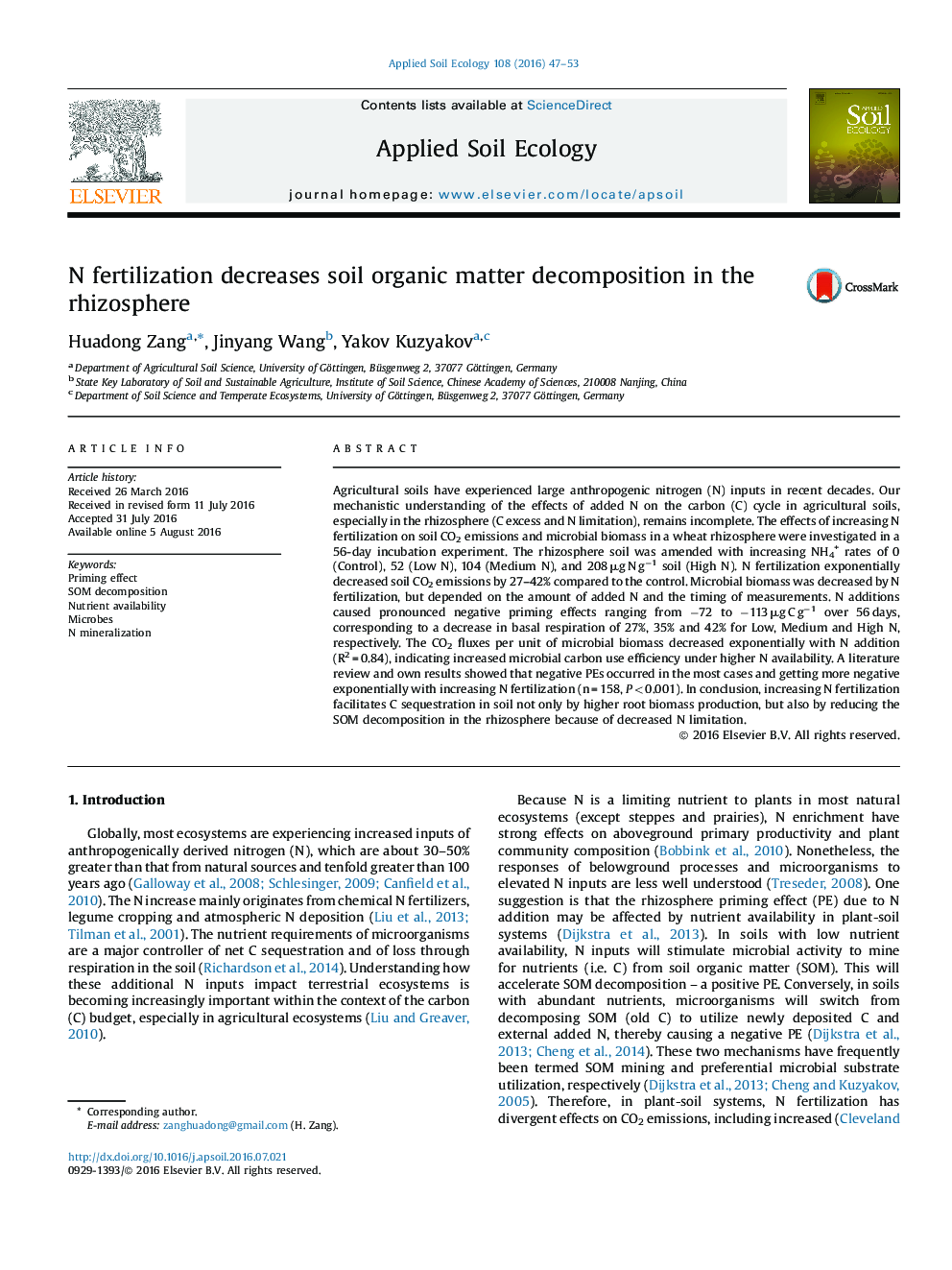| Article ID | Journal | Published Year | Pages | File Type |
|---|---|---|---|---|
| 6297429 | Applied Soil Ecology | 2016 | 7 Pages |
â¢Increasing N fertilization facilitates C sequestration in the rhizosphere.â¢Negative priming effect induced by N and decreased exponentially with increasing N fertilization.â¢Nitrogen fertilization decreased MBC, but depended on N amount and sampling time.â¢Microbial carbon use efficiency in the rhizosphere increased with N fertilization.
Agricultural soils have experienced large anthropogenic nitrogen (N) inputs in recent decades. Our mechanistic understanding of the effects of added N on the carbon (C) cycle in agricultural soils, especially in the rhizosphere (C excess and N limitation), remains incomplete. The effects of increasing N fertilization on soil CO2 emissions and microbial biomass in a wheat rhizosphere were investigated in a 56-day incubation experiment. The rhizosphere soil was amended with increasing NH4+ rates of 0 (Control), 52 (Low N), 104 (Medium N), and 208 μg N gâ1 soil (High N). N fertilization exponentially decreased soil CO2 emissions by 27-42% compared to the control. Microbial biomass was decreased by N fertilization, but depended on the amount of added N and the timing of measurements. N additions caused pronounced negative priming effects ranging from â72 to â113 μg C gâ1 over 56 days, corresponding to a decrease in basal respiration of 27%, 35% and 42% for Low, Medium and High N, respectively. The CO2 fluxes per unit of microbial biomass decreased exponentially with N addition (R2 = 0.84), indicating increased microbial carbon use efficiency under higher N availability. A literature review and own results showed that negative PEs occurred in the most cases and getting more negative exponentially with increasing N fertilization (n = 158, P < 0.001). In conclusion, increasing N fertilization facilitates C sequestration in soil not only by higher root biomass production, but also by reducing the SOM decomposition in the rhizosphere because of decreased N limitation.
Graphical abstractDownload high-res image (141KB)Download full-size image
